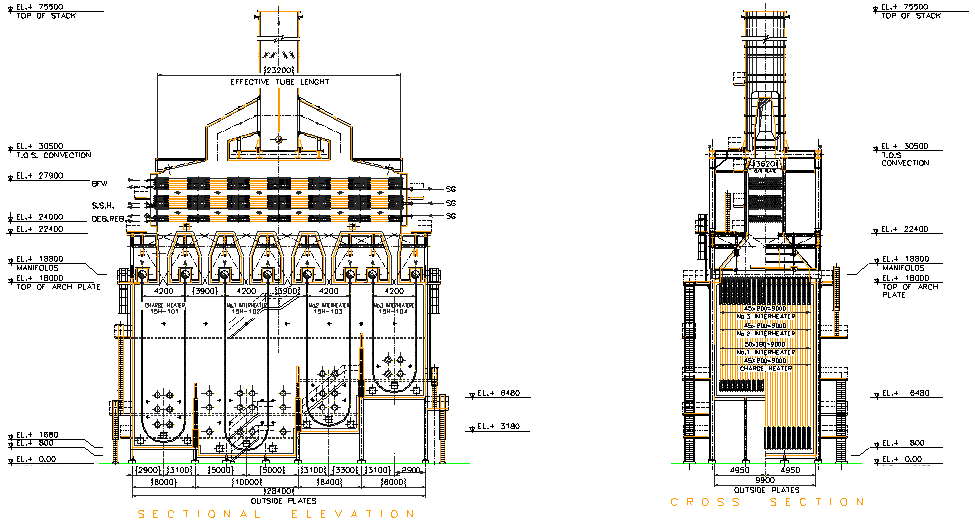The main characteristic of fired heaters for catalytic reforming unit is the very high gas feed flows that need to be heated and then reheated several times for the different adiabatic reaction steps. This implies very large compressors being used to give the system the necessary flowrate. Operating as well as capital cost consideration are, therefore, in favour of low pressure drop multipass heater design.
The use of parallel inlet/outlet manifold and low pressure drop tubes hairpins having very large radius return bends located in the firebox (fig.5) is the most common solution. In order to further minimise the coil tube length, the double fired arrangement is preferred when high duties are involved even though other consideration may time to time suggest different solutions.
Manifolds may be top (fig.1) or bottom installed, with the last option being preferred in ICS experience since the load of the radiant coil may be taken by the concrete foundation instead of needing unnecessary additional structure in the radiant steelwork envelope.
Fig.1
Due to the very tight layout of the multistage reactors special experience is needed in the design of the manifold expansion which has to be fully taken inside the radiant box by the movements of the radiant coil. A complex system of spring supports and guides has to be studied to achieve this result.
Modern heaters are based on low pressure drop design therefore can not accept the high pressure drop of conventional tube bundle convection coil. As a consequence the process service in the heaters is segregated in the radiant section and has very low thermal efficiency with flue gas leaving radiant section typically around 800°C. Since the catalytic reformers size is in general very large, it is imperative to recover the waste heat up to an overall efficiency of around 90% with or without air preheating. This means that the raising steam is an unavoidable solution but it is still possible to use part or all of the waste heat to preheat the charge to the different reboiling columns connected to the unit (splitter, bedutanizer etc.) bearing in mind the heat transfer optimization concept of pinch technology as well as the needs of flexibility in start up and operation.

